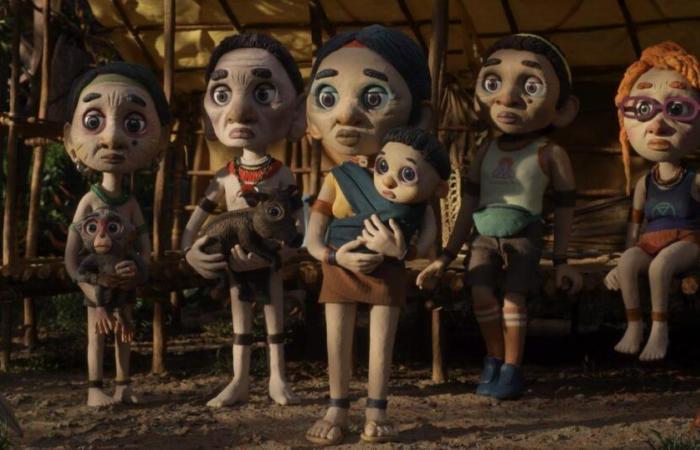“Sauvages”, the latest animated film in volume by Claude Barras, was released on October 16. Eight years after the success of “Ma vie de Courgette”, the Valais filmmaker this time dives into the jungle of Borneo to raise awareness of the disappearance of orangutans.
“Sauvages”, the latest animated film by director Claude Barras, co-produced by RTS, transports the viewer to the forest of Borneo with two children and a baby orangutan. It offers an environmentalist and ecological tale denouncing the ravages of deforestation and the intensive exploitation of palm oil producers in Borneo, in Southeast Asia.
Kéria is an eleven-year-old girl whose deceased mother was from an indigenous people. One day, she takes in an orphaned baby orangutan, found in the palm oil plantation where her father works. It is then his cousin Selaï who enters his life, a young Penan – a people of hunter-gatherers from the island of Borneo – distanced by his family from the conflict which pits his people against logging companies.
Through contact with her cousin, the young girl will reconnect with her indigenous roots. Together, they will do everything to fight against the announced destruction of their environment and their habitat.
External content
This external content cannot be displayed because it may collect personal data. To view this content you must authorize the category Social networks.
Accept More info
The legacy of Bruno Manser
The film is reminiscent of the story of Basel activist Bruno Manser, who disappeared twenty years ago in suspicious circumstances while defending the Borneo forest. “Bruno Manser is one of the inspirations of my childhood and of the film that I am releasing today,” explains Claude Barras in the Vertigo show on October 15.
The idea for the film was born in 2016, when Claude Barras came across an alarming article: the orangutan population went from a million individuals in 1900 to only a few thousand in 2016. “I wanted to to talk about the planned end of these fantastic animals”, underlines the director.
Between tradition and modernity
Claude Barras strives to avoid the cliché of “noble savages”. In his film, indigenous people integrate certain aspects of modernity while preserving part of their culture. If some Penans lead a nomadic life in the forest, some of them have settled in the city and take advantage of modernity: “It is these different facets of Penan culture that I tried to bring together in this film” .
The Valais filmmaker takes care to avoid any Manichean vision and offers “a tale based on a tangible reality”. The forest of Borneo, a fragile and threatened ecosystem, is not without danger for the young characters in his film. Lurking in the shadows, animals are threatening for some.
>> Listen to the interview with Claude Barras in Vertigo:
A perfected animation technique
The film uses the stop-motion technique, already used for “Ma vie de Courgette”. Claude Barras specifies that his team relied on new technologies such as 3D metal printing for the body frames and powder sintering printing for the characters’ heads.
What impresses in “Sauvages” is the rendering of this tropical forest. Abundant, it presents a host of details and is renewed throughout the film. “We created banks of trees and plants that we recomposed from one scene to another, with different colors, different lighting, to give this impression of a multiple forest which follows the journey of the characters,” explains Claude Barras. .
The director also emphasizes the importance of sound in creating realistic atmospheres. With this same perspective, Claude Barras sent sound engineer Charles de Ville to the forest of Borneo to record the sounds of the forest for three weeks.
A recurring theme: the orphan
As in “Ma vie de Courgette”, the figure of the orphan is central in “Sauvages”. Claude Barras sees it as a legacy of the children’s stories that left his mark, but also as a powerful narrative force: “A character must begin by having a break, a loss. And that cannot be bigger than losing one’s mother .”
The film ends with the song “Tous les cris les SOS” by Daniel Balavoine, whose lyrics echo the ecological fight at the heart of the story. For Claude Barras, this is an opportunity to recall that “the situation is serious in terms of biodiversity and the health of the planet”.
Comments collected by Rafael Wolf
Adaptation web: Sébastien Foggiato
“Sauvages” by Claude Barras, with the voices of Babette De Coster, Martin Verset, Laetitia Dosch. To be seen in French-speaking cinemas since October 16, 2024.






